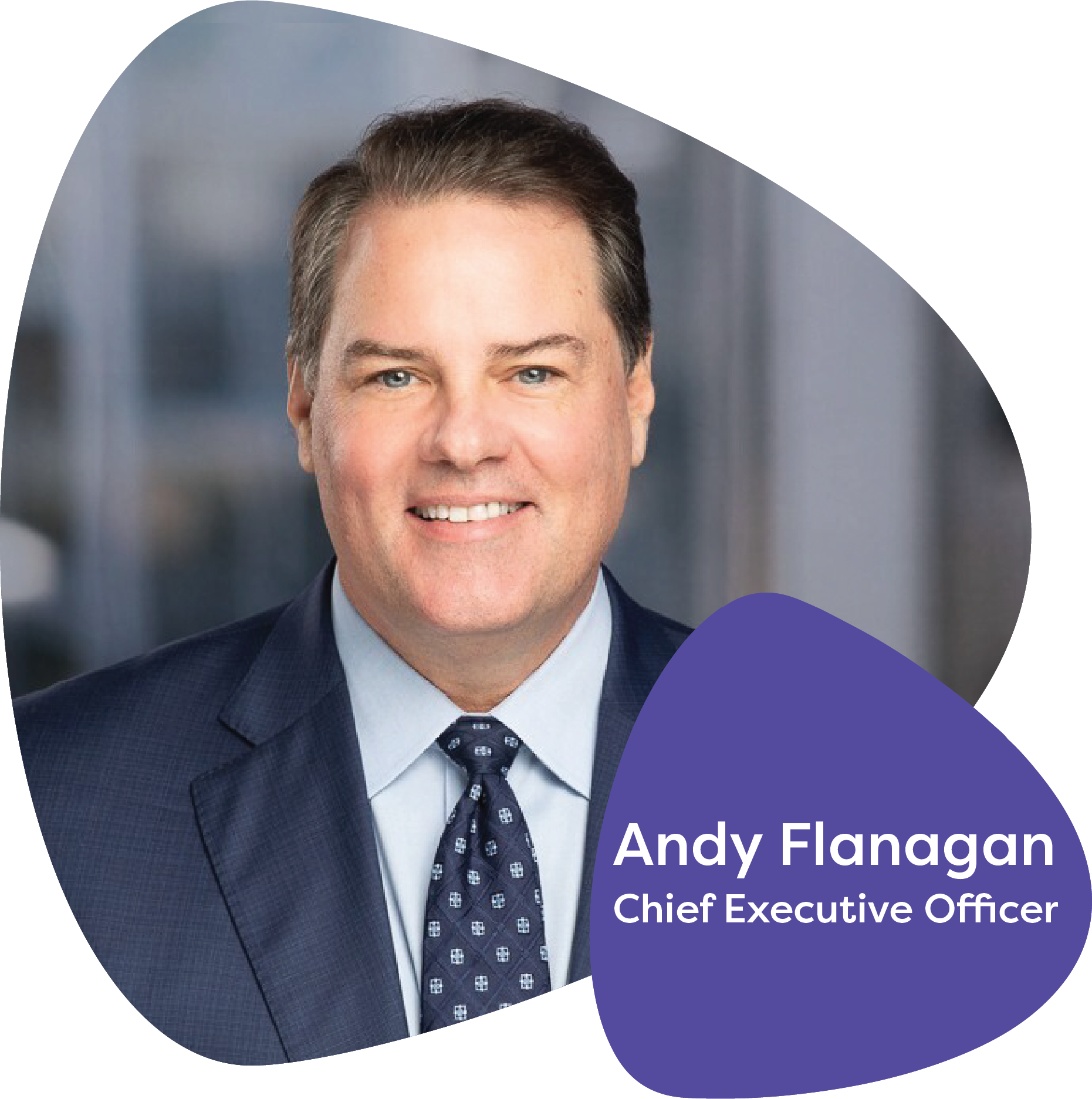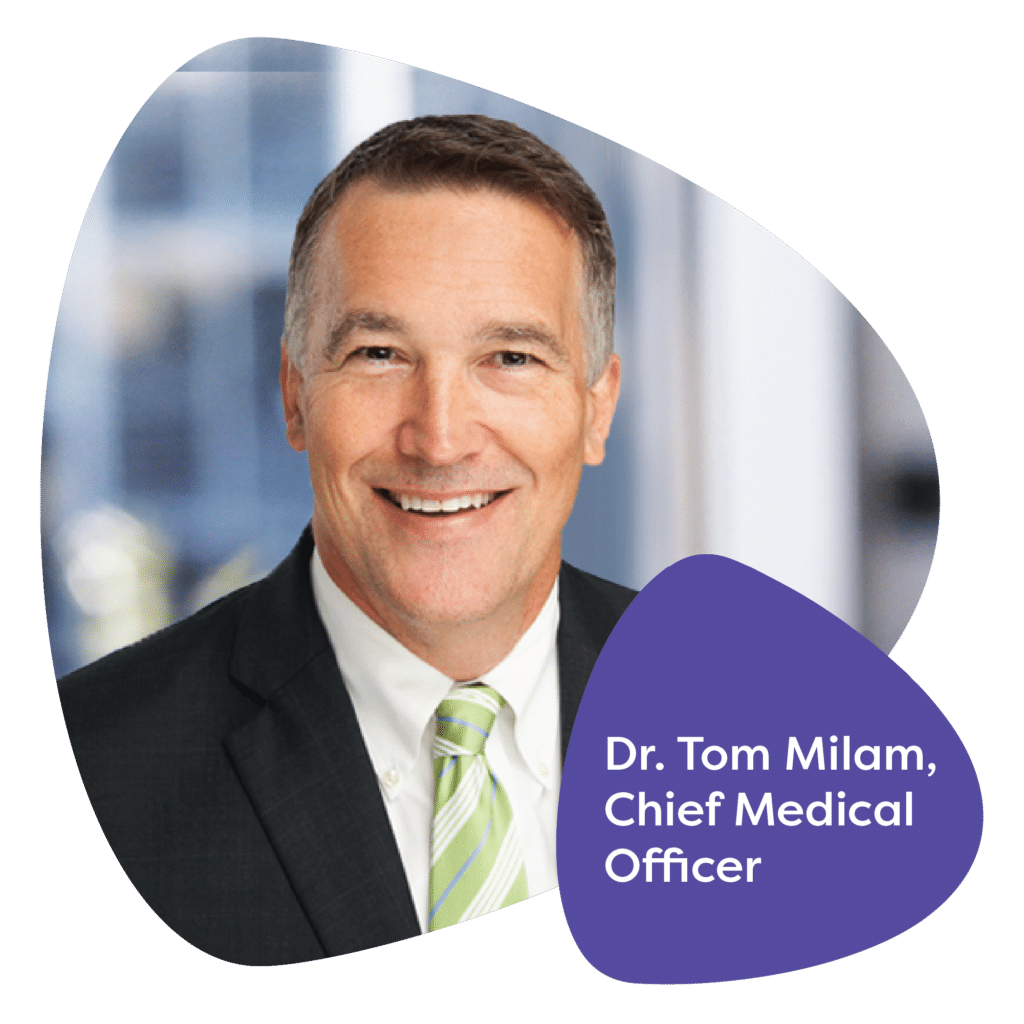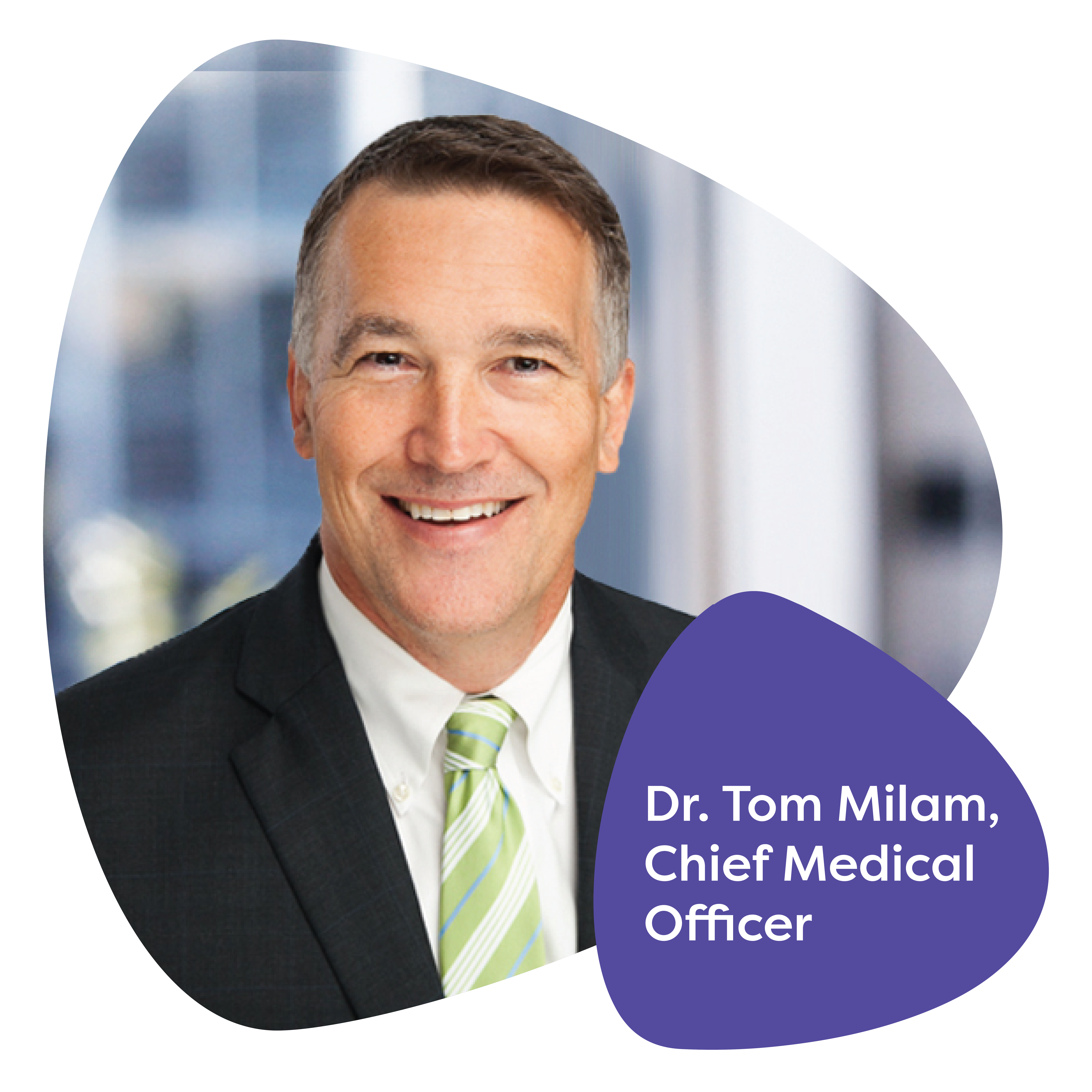The omnibus bill is a major step forward for people seeking mental health treatment. The bill signed by President Biden in December 2022 puts a least $10 billion into behavioral health in new year. The bill will extend telehealth flexibilities for Medicare beneficiaries, buprenorphine deregulation, and put more money towards expanding workforce development programs in the behavioral health space.
Our very own Chief Medical Officer, Dr. Thomas Milam, broke down everything you need to know about the omnibus bill and all it entails.
Presentation transcript
Good afternoon, everyone. I’m glad to have folks join us to discuss some key takeaways from the omnibus bill that President Biden signed at the end of December 2022. It was a very good bill for mental healthcare and telehealth care and very timely with several things going on in our country. I want to talk about some of the bill’s key components and their impact on mental health and substance use disorder treatment. Then, drill down on a couple of areas that I think are particularly important to watch as they unfold in terms of the legislation and how the medical community interprets certain bills.
Let’s first remember that as of the airing of this presentation, the public health emergency started on January 31st, 2020. We’re almost three years fully in, and it’s been renewed every 90 days since it began. There was anticipation that maybe it would end this January, but it does look like it’s likely going to officially end as a public health emergency in April. It’s estimated to end around April 11th, 2023.
There was a lot of concern about what would happen at that point. It was often called the ‘cliff that patients would fall off of’ in terms of telehealth legislation that enabled patients to get the care that they needed and for providers to offer that care through telehealth strategies. There was concern that it would abruptly end, which would really be horrible for those of us who have either been on the receiving or giving end of telehealth. We’re very grateful for the omnibus bill.
Overview of the omnibus bill
This bill was originally called the Consolidated Appropriations Bill or ACT of 2022, which was going to extend all the current telehealth regulations and flexibilities that are in place by 151 days after the end of the public health emergency. If it ended on April 11th, that would extend to September 11th, 2023. This new omnibus spending package goes by other names: House Resolution 2617, the Performance Enhancement Reform Act, or the Consolidated Appropriations Act of 2023. Out of all these different names, we’ll call it the omnibus bill. This bill has allocated $1.7 trillion to multiple areas of discretionary spending in our government, which is pretty extraordinary. It does a lot of other things too. It extends the public health emergency error flexibilities to the end of 2024 – two years. We have two years to work on telehealth legislation and get things more secure. I’m going to talk about some of the specifics of that.
During these next two years, congress will continue to review claims coming in through Medicare and Medicaid Services (CMS). They will look at the types of services offered, where they are offered, who’s providing them, where the patients are located, and how long those services are needed. A lot of data is going to be gathered. The hope for us in the telehealth industry is that during these two years and going forward, the whole telehealth industry will coalesce around some core features of how healthcare’s provided.
I’m really excited about it because I think at Iris, we’ve been doing telehealth for over 10 years and have seen the impact that telebehavioral health and telemental health has on communities around the country where access is very limited. I’m really excited about this extension for two more years and about the dozens of bills that are at the state and federal level to make many of the flexibilities permanent law for how healthcare is delivered.
Funding expansion details
Let’s talk about a couple of things. The funding expansion in the omnibus spill includes $7.5 billion from Substance Abuse Mental Health Services Administration (SAMHSA). SAMHSA oversees spending on mental health and substance use disorder care. Some really wonderful things are being funded through that $7.5 billion from SAMHSA. Those include mental health block grants for screening, prevention, and treatment of mental health and substance use disorders. The CCBHC model, the Certified Community Behavioral Health Clinic model expansion, is great for accountability for organizations that are doing behavioral health and how they measure and provide services.
There’s also expansions of children’s mental health services and school-based resources. There’s more money put into suicide prevention, behavioral health, and crisis prevention, including the 988 hotline, which has been fantastic and needs to continue to run and be serviced and monitored.
There are also additional dollars for mental health crisis response grants. There are a lot of things at the community level. There are some other things that are really important parts most people might not think of. There’s funding to increase 200 more slots for residency and fellowship training, and half of those 200 slots are for psychiatry and fellowships related to psychiatry. That’s a big win for those who are thinking about going into psychiatry as a field, which is a wonderful field. Expansion of services by other services through telehealth, including physical therapy, occupational therapy, speech and language therapy, and audiology – All those things are going to continue to be funded through telehealth, which is really important.
There’s also funding towards medicine that involves a lot of training and supervision of trainees. Trainees will be allowed to continue to be supervised through direct supervision, telehealth, or telemedicine initiatives. That continues many things we’ve become accustomed to during public health emergencies.
Overview of geographical and regulatory details
In terms of telehealth and the provision of telehealth and behavioral health related to mental health and substance use disorder treatments. There are two areas that I want to point out: geography and regulatory areas. Let’s talk about geography first. This omnibus bill offers a temporary suspension and continued suspension of the geographic site requirements for providing care for the next two years.
Historically in medicine, you had to drive to a clinic, hospital, or facility to get care because that’s a site of care. And you could only get care there. Your doctors, nurses, and others providing care could only be reimbursed if the patient went there. This change to taking away the site requirement is huge. For much of my practice life, many patients in rural areas still did not qualify to get telehealth in their areas because they weren’t within these strict geographic areas of care. That’s a huge change and win for telehealth and patients needing telehealth. Another change is not allowing the linkage of telehealthcare only to designated healthcare shortage areas. Because we used to talk about doing telehealth in healthcare shortage areas, that’s really important. But in the public health emergency, every place was designated a healthcare shortage area, which really is the truth. Our country needs behavioral healthcare. It’s in short supply. I don’t know that there’s much going back to see it any other way. But those are some important geographic provisions.
This bill also allows federally qualified healthcare clinics (FQHCs) and rural healthcare clinics to remain eligible for mental health services is really important. Previously, many of them could not get telehealth reimbursement, particularly for mental health services. At Iris, we’ve partnered with dozens and dozens of FQHCs and rural health clinics across the country. They’re often in areas of real shortage, real need where mental health access is important. Those FQHCs and rural health clinics can remain eligible for those services. And interestingly, this is the language of things. It doesn’t apply to telehealth per se, but it is allowed, and for reimbursement in care under interactive real-time telecommunications technology, that’s what it’s called instead of telehealth.
So it’s still allowed. Like telehealth, it’s called something different. But that’s really exciting, and we love partnering with rural health clinics that provide physical and behavioral health and substance use disorder treatment. That’s wonderful.
Another provision geographically is allowing the patient’s home or domicile, if they live in a homeless shelter or recovery center, to remain an eligible healthcare site so people can get care in their homes. There are certain requirements around that that are gonna be teased out a little bit more, and we’ll talk about that in a minute. Also, audio-only services were really key in the early days of the pandemic. And for folks that didn’t have the bandwidth or data plans to do a lot of video interviews to see those patients through audio-only, particularly for substance use disorder treatments and prescribing buprenorphine and lifesaving treatments, doing it through audio only was really important.
Now, as a doc, I’m not used to talking to my patients on the phone a lot, so it’s different, and the use of it has gone down. However, it’s still really critical for many patients in rural areas that don’t have bandwidth or coverage plans to be able to call them and talk to them on the phone and keep them, well, keep them in treatment, keep them engaged with their therapists at other services. It’s going to be really important. What’s going to be required of that is that doctors and patients have to determine that audio-only services or telehealth services are going to be critically necessary to them getting care and staying well. As providers, we will need to better document in our notes why we’re doing telehealth, that it’s more than just out of convenience for the patient or me.
It’s because the patient and the healthcare provider agree that telehealth, either through video or audio, is critical to them getting the care they need to stay well and not decompensate. So it’s good to start having some templates that telehealth providers put in their notes to support and show CMS that this particular care that’s offered through this telehealth avenue, audio-only or video, is being done because it’s critically necessary and not just out of convenience. That’s important. Switching from geographical to regulatory issues, though all these are somewhat regulatory, there are a couple of things to point out. First, as folks know, during the public health emergency, there was some flexibility about using secure video platforms that may not have been HIPAA compliant and other communications with patients to keep them well.
But that’s ending. We need to get back to using HIPAA-compliant secure video platforms, and anything where we’re communicating protected or patient health information needs to be a HIPAA-compliant form. There’s going to be more scrutiny of that. It’s important to make sure that everything you’re using in terms of seeing patients or communicating with patients and with other caregivers about patients is done through a HIPAA-compliant platform. And there are many, many more available.
Another interesting piece is essentially the in-person telehealth requirements. Now those have been debated, and there was concern about the public health emergency ending and people not being able to see their telehealth provider anymore unless they saw him, her, or them in person. This requirement is odd because we treat people where a provider may be in one state, the patients in another part of the country, and the providers licensed to treat patients there.
But this bill says that you have to see that patient in person within six months of seeing that patient through telehealth. How is that supposed to happen? It just seemed odd. Additionally, every 12 months after that, you’re supposed to see the provider in person. So there are some misunderstandings about it and some clarification needed on behalf of congress around one – does it have to be the provider you’re seeing or a provider in that specialty or working with their primary care provider? Do those providers you might normally see in person in the town you live in satisfy the in-person requirement? When your telehealth provider for, particularly for mental health or substance use disorder treatment, might not even live anywhere near your town. So will that be allowed? Hopefully, I think so, but that requirement is waived for two more years.
It’s also interesting that the in-person requirement is six months before starting treatment, and every 12 months is only for a pure mental health condition. And this is what I think really struck me as odd about this regulation. And this is not just part of the omnibus bill. It’s part of previous telehealth bills that have been put forth by congress. But it’s odd because you can do telehealth where you need it if you have a physical health issue. You can do it if you have a substance use disorder, mental health and a substance use disorder called comorbid or dual diagnosis. But essentially, these requirements for seeing your provider in person, your telehealth provider, only applied if you had a pure mental health condition. That seems to go against the grain of fairness and parody we’ve come to know in medicine, where physical and behavioral health were seen as equal. I think some legislative changes to that are going to be coming.
Ryan Haight Act related issues
The last thing in terms of regulatory issues I’m going to talk about will be things related to the Ryan Haight Act. One of the things that’s important to keep in mind is the Ryan Haight Act, officially called the Ryan Haight Online Pharmacy Consumer Protection Act of 2008. It’s been around for 15 years, and it was generally meant to regulate pharmacies, particularly rogue online pharmacies, from filling prescriptions where the doctor couldn’t be identified clearly, the location of the provider, the location of the patient, things weren’t identified clearly. That’s what happened through Ryan Haight and why this act became enacted. What we’ve come to see it to mean is, essentially, doctors cannot prescribe any controlled substances by telehealth. And, that’s really a misunderstanding of the intent, I believe that the DEA had for this act.
Yet, that’s the culture in which it’s been interpreted. There’s been concerns about the public health emergency ending and then patients not being able to get the medications that have kept them well. And when we’re talking about controlled substances, we’re talking about pain medicines and buprenorphine, suboxone, and things like that. But we’re also talking about other pain medicines that are commonly used as well as benzodiazepines and stimulant medications that are used to treat ADHD. So all those potentially could have limitations on the prescribing of them through telemedicine unless certain things are met. There have been exceptions to that all along, and particularly exceptions during the public health emergency. That was one of the main exceptions to the Ryan Haight Act.
The in-person requirement is one of the things that was also waived during the public health emergency. You did not have to see somebody in person to have that provider prescribe you a controlled substance. So people with opiate use disorders as well as people being treated with stimulants for ADHD and other health conditions for which they’re used and people needing benzodiazepines for panic attacks, anxieties, seizures, things like that they’ve all been able to get the care through telehealth and kept people well. That’s been critical to their care. You can’t imagine that just stopping. There’s been increased pressure on the DEA to clarify one of the other exceptions to the Ryan Haight, which is providers that are designated as having a special registration with the DEA. There’s a lot of confusion around that and what that actually means.
But essentially, what was laid out in the Ryan Haight act is the DEA had a special registration process that allowed providers then to prescribe or e-prescribe controlled substances via telemedicine. So far, though, in the last 13 years, the DEA has never outlined what that special registration process is. I will say with the public health emergency anticipated to officially end in April. There is more pressure than ever on the DEA to make clear what this special registration process is.
Currently, you can go to DEA-registered clinics and hospitals and continue to prescribe through telemedicine for those types of organizations. But there are a lot of clinic types and different organizations where patients are and seeing them through telemedicine and telehealth platforms, where some would say that violates the intent of the Ryan Haight Act. We do need some leadership and some clarity from the DEA, which is part of the Department of Justice.
And in talking to people around the country right now, everybody’s waiting. They hope any day, the DEA will come out with stuff. There’s a lot of pressure on them – presidents, congress have mandated them to clarify this rule, and yet they’ve failed to do so for 13 years.
Omnibus bill takeaways
There are other organizations that are trying to continue to make sure patients get the care they need. SAMSHA has proposed a rule to permanently allow prescribing providers to offer buprenorphine for opiate use disorders because it’s a life-saving treatment. Particularly with the opiate epidemic, which is still one of the main epidemics we’re facing all over the world. But I would like to see, and I think many patients and providers would like to see the exceptions not just for buprenorphine, but for everyone with a mental health condition, substance use disorder, who is getting care that may require a controlled substance that they can continue to stay on that and stay well and not decompensate, not end up back in the hospital or, or worse.
In reading the pulse of legislators for the last 10 years and being part of mental health, behavioral health, and telehealth, I would say there are a lot of wonderful people that get it, that understand this issue. It’s got bipartisan support. Most of the things about expanding telehealth post-public health emergency have bipartisan support. But there’s some trouble with congress getting together and passing meaningful legislation right now. I’m really hopeful that in the next couple of years we’re going to work through some of those roadblocks in congress and get some of these lifesaving measures passed.
In general, the omnibus bill has been very positive, very good for telehealth and for mental health. There are still some more updates that need to occur, but we’re really moving in the right direction. Thank you for your attention today. If you have any questions, please feel free to reach out to myself or any of us at Iris Telehealth. Thank you.
At Iris Telehealth, we deliver quality, sustainable behavioral health care to patients all across the country. If you’re an organization looking to help increase access to mental health care in your community, visit our services page or check out our FAQ.





